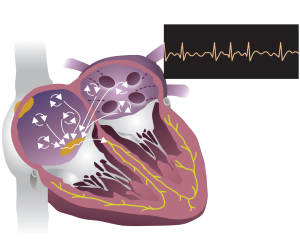Cryoablation
Atrial fibrillation or AFib is a problem with the heartbeat’s rhythm caused by irregular electrical signals. AFib causes an irregular quivering or rapid heart rhythm in the upper chambers (atria) of the heart. Untreated it can lead to other rhythm problems as well as chronic fatigue, difficulty breathing and heart failure.
One clinically proven treatment option for AFib is called cryo catheter ablation or cryoablation. This treatment uses coolant, to destroy the faulty tissue and differs from radio wave energy used in another treatment option called catheter ablation, where the physician has to go point-by-point to each spot around the four pulmonary veins, a time consuming and laborious process. With cryoablation, the physician inserts a balloon into the vein, isolates the pulmonary veins and freezes the heart tissue to interrupt abnormal electrical signals that contribute to the irregular heartbeat.
Cryoablation eliminates or minimizes some of the rare but potential complications of radiofrequency ablation, particularly pulmonary vein stenosis (blockage of one of the pulmonary veins), atrio-esophageal fistulae (damaged connection between the atrium and esophagus) and clot formation. It is also a faster and simpler procedure to perform.
The Medtronic Arctic Front Cryoablation System is the only ablation device approved for use with two types of AFib called paroxysmal atrial fibrillation and persistent AFib. Paroxysmal AFib is found in 30 to 40 percent of atrial fibrillation patients and are episodes of AFib that occur occasionally and usually stop spontaneously. Episodes can last a few seconds, hours or a few days before stopping and returning to normal sinus rhythm, which is the heart’s normal rhythm. Persistent AFib episodes last for at least seven days in a row.
Normal Flow with ECG

Afib Flow with ECG

Medtronic Arctic Front Cryoablation System
